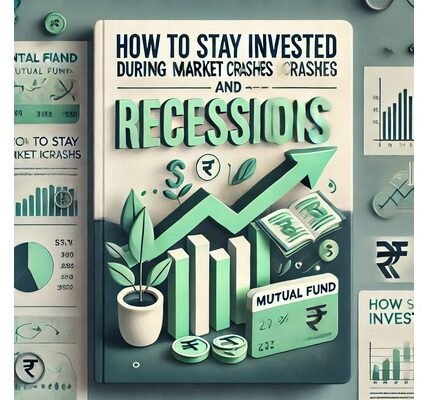Why Direct Stock Investment is Not Good for Your Financial Growth
 Introduction
Introduction
Many investors are drawn to direct stock investment because of the potential for high returns and the thrill of picking winning stocks. However, while investing directly in stocks can be exciting, it often comes with significant risks that can hinder long-term financial growth.
In this article, we’ll explore why direct stock investment may not be the best strategy for most investors. We’ll discuss the hidden pitfalls, psychological challenges, and alternative investment options that can help you build wealth more safely and efficiently.
1. High Risk of Capital Loss
One of the biggest drawbacks of direct stock investment is the risk of losing a substantial portion of your capital. Unlike diversified investments like mutual funds or ETFs, buying individual stocks exposes you to company-specific risks such as:
- Business failures (e.g., Yes Bank, DHFL)
- Sector downturns (e.g., IT stocks in 2022-23)
- Corporate frauds (e.g., Satyam Scam)
Case Study: The Downfall of Yes Bank
Investors who held direct stock investments in Yes Bank saw their investments drop by over 90% during its crisis. Diversified investors, however, were protected because their exposure was limited.
2. Lack of Diversification
Direct stock investment often leads to concentration risk, where a large portion of your portfolio is tied to a few stocks.
Why Diversification Matters
- Reduces volatility
- Protects against single-stock crashes
- Improves risk-adjusted returns
Example:
If you had invested only in Reliance in 2008, your portfolio would have dropped 60% during the financial crisis. A diversified investor would have recovered much faster.
3. Emotional Investing & Behavioral Biases
Emotions drive stock markets, and direct stocks investment amplifies psychological traps like:
- Overconfidence (believing you can beat the market)
- Loss aversion (holding losing stocks too long)
- Herding mentality (buying at peaks, selling at lows)
The study by Dalbar Inc.
The average investor underperforms the market by 4-5% annually due to emotional decision-making.
4. Time-Consuming Research Requirements
Successful direct stock investment requires:
✅ Fundamental analysis (financial statements)
✅ Technical analysis (charts, trends)
✅ Macroeconomic awareness
Most retail investors lack the time, expertise, or resources to do this effectively.
5. High Transaction Costs
Frequent trading in direct stock investment leads to:
- Brokerage fees
- STT (Securities Transaction Tax)
- Capital gains taxes
These costs eat into returns significantly over time.
6. Underperformance vs. Passive Investing
Data shows that most active stock pickers fail to beat index funds over the long term.
S&P SPIVA Report Findings
- Over 85% of fund managers underperform the S&P 500 over 10 years.
- Retail investors perform even worse.
7. Better Alternatives to Direct Stock Investment
Instead of taking unnecessary risks with direct stock investment, consider:
A. Index Funds / ETFs
- Low-cost
- Automatically diversified
- Historically strong returns
B. Mutual Funds (Active & Passive)
- Professionally managed
- Broad market exposure
8. When Does Direct Stock Investment Make Sense?
Direct stock investment may work if:
✔ You have deep market knowledge
✔ You can dedicate hours to research
✔ You’re okay with higher risk
But for 90%+ of investors, passive strategies work better.
Conclusion: Is Direct Stock Investment Worth It?
While direct stock investment can be profitable for a small group of expert traders, it’s generally not ideal for long-term financial growth due to:
❌ High risk of permanent loss
❌ Emotional decision-making
❌ High costs & time commitment
❌ Underperformance vs. passive options
For most investors, diversified, low-cost index funds provide better risk-adjusted returns with far less stress.
FAQs on Direct Stock Investment
1. Can I become rich with direct stock investment?
A few skilled traders do, but most lose money. Statistically, passive investing works better.
2. How much money do I need to start direct stock investment?
You can start with ₹500, but proper diversification requires ₹5L+, which most lack.
3. What % of my portfolio should be in direct stocks?
If you must, limit to 10-15% for speculative plays.
4. Are penny stocks good for direct investment?
No. They’re extremely high-risk and often manipulated.
5. Which is safer – stocks or mutual funds?
Mutual funds (especially index funds) are far safer for long-term wealth.
Final Verdict
Direct stock investments are like gambling unless you’re a full-time professional. For steady financial growth, stick to index funds & ETFs.
For expert financial insights, visit Rich Path. and start your investment journey today! 🚀
Read more –
Top 5 Mutual Funds for Long-Term Growth in India in 2025








